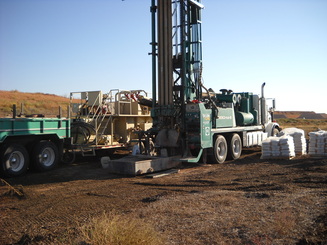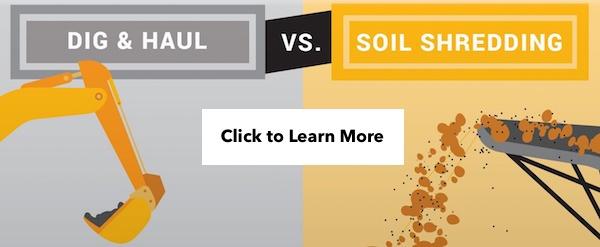As drilling techniques become more advanced and efficient, the methods of waste management have improved as well. While pits and landfills are still being used, new methods of closed containment systems are becoming more common.
With ever-increasing regulations concerning the disposal of drilling waste, the oil and gas industry has taken a proactive role in developing drilling fluid and waste management methods. The proper drilling waste containment methods, combined with drilling advances, allow environmental drilling companies to get maximum production while having the minimum environmental impact. 
What Drilling Fluids Should be Used?
Using the correct selection of fluid packages will result in maximum rate of penetration and minimal non-productive time. Aqueous fluid systems are water-based mud formulas that are designed for maximum drilling performance while having minimal environmental impact. Non-aqueous fluids are set up for reservoir drilling and high temperature and high pressure environments. Air and foam systems are used in under-balanced and managed pressure drilling applications. Most drilling service providers will have a wide section of specialized foam systems to offer clients.
Waste management can be broken down into four areas.
1. Solids Control Solids: Control and services include shale shakers, shale screens, agitators and mud mixing systems. Most drilling service firms will also design and manufacture these systems as well as provide servicing and repair.
2. Containment And Handling: In a move to reduce their environmental impact many drilling companies are adding closed containment systems. These tanks require very little maintenance and can be reused once a well stops producing. These tanks isolate the drilling waste and greatly reduce any negative impact on the environment.
3. Recycling And Recovery: Three keys to an effective waste management program are reduce, recycle and recovery. Environmental drilling firms continue to strive to recycle and recover whenever possible. This reduces the environmental impact and lowers operating costs.
4. Treatment And Disposal Treatment: and disposal methods will be determined by the specific types of drilling fluids that are used, environmental restrictions and the types of waste streams that are created.
Increased productivity demands and environmental regulations are forcing drilling companies to seek out more efficient ways of doing business. Proper waste management can not only keep drilling companies from running afoul of government regulations, but they can also positively impact the bottom line.
Every drill site is different and will present unique challenges when it comes to specialized drilling waste management. In the vast state of Texas for example, soil and groundwater differ based on region. If you need environmentally sound waste management methods, give Talon/LPE Drilling Services a call today. Whether your project requires direct push cutting or hollow stem auger cuttings, Talon / LPE can provide quality service.
When drilling with mud or air, more challenger may emerge. However, to counteract those challenges, Talon / LPE uses a dust containment system to divert the cuttings in a box, which is fitted around the drill system. With mud, Talon / LPE utilizes a shale shaker complete with de-sanders and shaker screens. Handling waste properly and safely is paramount when it comes to environmental drilling, and Talon / LPE takes waste containment seriously. As the premier environmental drilling specialists in the state of Texas, New Mexico and Oklahoma, you can trust this superior drilling company with your project.


